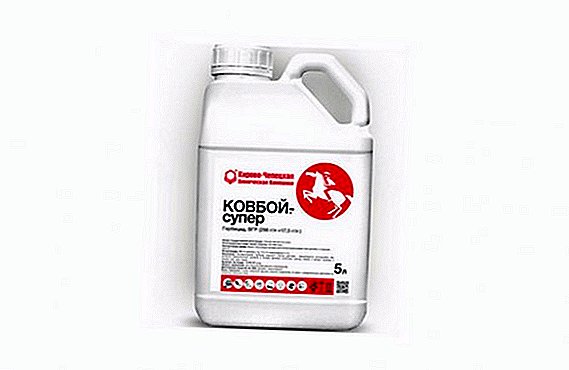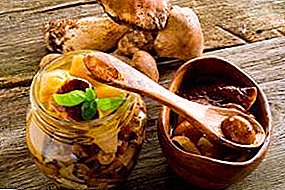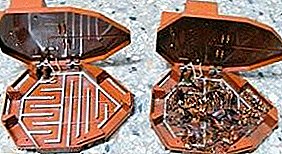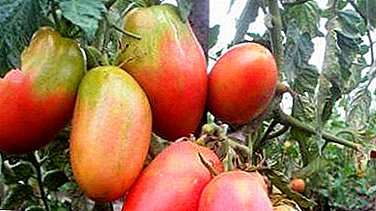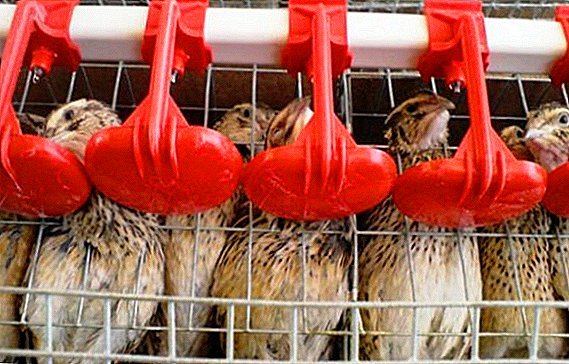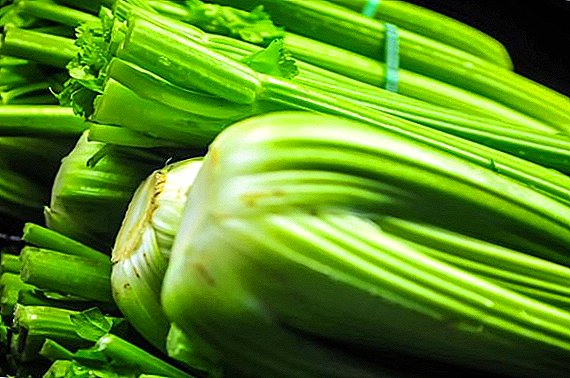 Recently, the eyes of amateur gardeners and landscape designers have increasingly focused on the curly honeysuckle.
Recently, the eyes of amateur gardeners and landscape designers have increasingly focused on the curly honeysuckle.
The plant is not only attractive for its flowering, due to the flexibility of the branches, the variety of its use allows for the most daring fantasies in the decor.
Today we will talk about the possibilities and conditions for growing an ornamental plant in the Moscow region.
Is it possible to grow in the Moscow region
The description of the plant mentions its frost resistance, which makes it possible to grow honeysuckle in the cold climate of the Moscow region.  The climate of the Moscow Region is due to its remoteness from large natural reservoirs and a fairly extensive territory. Here, all four seasons and the transition from one to another are pronounced. Summer is warm, but not hot; Winter is cold and snowy.
The climate of the Moscow Region is due to its remoteness from large natural reservoirs and a fairly extensive territory. Here, all four seasons and the transition from one to another are pronounced. Summer is warm, but not hot; Winter is cold and snowy.
The winter period lasts up to five months, starting at the end of November and ending at the beginning of April. The average temperature is from -10 to -12 ° С, it can go down to -15 ° С.
Check out the popular types of honeysuckle for the garden, especially such as Tatar honeysuckle, curled honeysuckle.
In March, the winter starts losing ground, and in the first decade of April snow is almost not observed anymore, the daytime temperature reaches zero degrees.
In May, the nature of the region comes to life, despite possible return frosts, the air temperature warms up to +16 ° С during the day. Warm summer lasts until September, it is characterized by moderate precipitation, the highest summer temperature is +25 ° С.  In August, it starts to get cold at night, the amount of precipitation increases significantly, the daylight hours are reduced. It is time to harvest.
In August, it starts to get cold at night, the amount of precipitation increases significantly, the daylight hours are reduced. It is time to harvest.
The autumn of Moscow region is warm, not particularly rainy, but damp and windy. The average daily temperature in the middle of autumn is +5 ° C.
Given the weather conditions in the region, you should select plant varieties that are ideal for this climate.
According to experienced gardeners, these varieties are:
- "Graham Thomas" - with white-yellow or pinkish flowers with a white border;

- "Harlequin" - Abundantly blooming pale pink color;

- "Belgica" - with dark pink or purple buds.

Honeysuckle frost-resistant, but does not tolerate strong winds. Having provided her with a reliable shelter from drafts, you can admire her flowering for about twenty-five years.
Did you know? An ancient Chinese legend tells of the infinite devotion to each other of two twin sisters. When one of them fell ill, the second, despite the contagiousness of the disease and the doctor's warning, did not leave the bed of her sister until she came down herself. The dead sisters were buried in a single grave, on which a honeysuckle bush grew. Over time, people noticed that the flowers and berries of the shrub have tremendous healing power.
What is used in garden design?
The shrub adapts well to different surfaces and growth conditions, and tolerates shading, which makes it attractive for landscape designers.
Climbing plant is successfully used for zoning a small area. Having established a support of any type and having started up a bush along it, you will receive a live partition.  Liana can cover with greenery unsightly walls, buildings, or a stone fence in need of decoration.
Liana can cover with greenery unsightly walls, buildings, or a stone fence in need of decoration.
You will also be interested to learn about the cultivation of edible honeysuckle, how it is useful, and how to grow such varieties of edible honeysuckle, as "Bakcharsky giant", "Nymph", "Volkhov".
With the help of honeysuckle decorate arbors and terraces, as well as decorative supports. Climbing shoots are indispensable in the design of alpine slides, stony gardens. With their help, you can give a spectacular view of the stairs and decorative arch.
Iberis, high-grade roses, coniferous shrubs, hawthorn will be excellent neighbors for the plant.
How to choose a good seedlings when buying
It is advisable to buy the plant from professional private gardeners or in a nursery, as it is difficult to determine the variety by seedling.  Main selection criteria:
Main selection criteria:
- Bushes should be two or three years old, the optimum height - from 0.5 to 1 m;
- shoots without damage, flexible, not dry, preferably the presence of buds. A slight peeling of the bark is allowed: this is a feature of the plant itself;
- root system should be kept in a handful, strong roots, not dry.
Important! It is recommended to choose seedlings either in containers or in special bags, such packaging protects the roots from damage. Since the honeysuckle is cross-pollinated, it is advisable to plant several different varieties.
Where better to plant
The best soil for the plant is light, moist, drained and organically flavored loam. Ideal soil with a neutral reaction.
Groundwater should be no closer than one and a half meters to the surface, too much moisture will ruin the root system.  Honeysuckle loves the sun, but does not tolerate a strong wind. The place should be sheltered from the draft and as well as possible lit. Many varieties feel quite normal in the penumbra.
Honeysuckle loves the sun, but does not tolerate a strong wind. The place should be sheltered from the draft and as well as possible lit. Many varieties feel quite normal in the penumbra.
Planting seedlings in the suburbs
In Moscow, it is better to land at the beginning of September, the air temperature at this time is about +10 ° C. The weather is favorable for rooting young bushes. During the winter period, the honeysuckle will have time to settle down and will begin to form buds in the spring.
Before planting, carefully clean the soil, dig and fertilize with organic matter: 1 square meter. m added to the manure to 30 g of superphosphate and potassium sulfate.
As an organic fertilizer, straw, pigeon dung, bone meal, fish meal, milk whey, potato peelings, egg shells, banana skins, onion peel, nettle are used.If necessary, deoxidize the soil and add up to 400 g of lime.
For planting under one bush they prepare a hole with dimensions 60x50 cm, the distance between the bushes is one and a half meters. 
Planting process:
- Inspect the roots, broken or dried remove.
- Immerse the roots in the talker of the soil.
- Lower the seedling into the pit, straightening the roots. The root neck should be at the level of the surface, or lower, but not more than 2 cm.
- Carefully fill the pit with primer.
- To water a bush under a root: 10 l on one plant.
- Pristvolny circle cover mulch (peat or humus).
How to care for a blooming liana
Honeysuckle unpretentious, care for her is the same as for any climbing plant: watering, fertilizing, cleansing the soil, pruning.
Watering
For normal development shrubs need moisture, pristvolny circle should not dry. Watering is carried out either in the morning or in the evening, trying to moisten the soil 10 cm deep. About 10 liters of water are poured under each bush. Especially carefully you need to monitor the condition of the soil during the flowering period. 
Important! If the summer is dry, water up to six times a month.
Support
The support for the creeper will suit any, most importantly, to be strong: metal or wooden batten, strong cord or mesh. Note: twist shoots clockwise.
For a beautiful form of liana requires strong support. It can be made of metal or wood, in the form of slats, stretched cords, mesh, or other means. The first shoots are evenly distributed over the support, given that the vine twists clockwise.
Soil care
For the root system of vines important timely access of oxygen and a sufficient amount of nutrients. Therefore, it is important to clean the soil of the tree circle from weeds, to carefully loosen, taking into account the proximity of the roots to the surface.  To preserve moisture after watering, the trunk circle is mulched using organic fertilizer or peat. Carry out the procedure at least twice a month. A layer of mulch - 4 cm.
To preserve moisture after watering, the trunk circle is mulched using organic fertilizer or peat. Carry out the procedure at least twice a month. A layer of mulch - 4 cm.
Top dressing
Every third year of life the plants carry out autumn digging with the obligatory introduction of organic matter, per 1 sq. Km. m - 10 kg of manure, 20 g of potassium salt and double superphosphate.
Every spring, before the activity of the kidneys, 30 g of ammonium nitrate per square meter are applied. m, the same procedure is carried out after the buds have dissolved.
In July, double superphosphate is added again, reducing the rate to 15 g, adding 10 g of saltpeter. 
Pruning
The first formative pruning vines spend immediately after planting, pruning the shoots to a third of the length so that they do not fork.
In the second year of life, unpromising shoots are removed, leaving three or four strong branches. When the shoots twist around the support, they are sent in the right direction so that they do not grow above a given height, or cut.
Every year they carry out sanitary pruning, removing broken or damaged, weak branches. You should not be zealous, so as not to reduce the pomp of the plant. For example, after wintering, not all branches seem to be viable.
Do not rush to remove them, wait for the heat. Usually dried up twigs wake up, and those that "did not come to themselves," you need to cut.  Every five years, a rejuvenating haircut is performed, cutting off half of the existing stalks. From the buds located at the base, grow new branches.
Every five years, a rejuvenating haircut is performed, cutting off half of the existing stalks. From the buds located at the base, grow new branches.
Preparing for the winter
Despite the frost resistance, the plant is still desirable to cover. Pre-clean the tree trunk circle from the remnants of fallen leaves, twigs. The branches gently bend down to the ground, removing them from the supports. You can purchase special materials for shelter, or cover with spruce branches and dry foliage.
Did you know? In addition to the healing properties, honeysuckle and magical powers are attributed. Dried flowers are used by pagan sorcerers in love potions, and fresh branches that have just been picked are used in rituals to attract financial well-being.
In conclusion: honeysuckle is not only a flowering, but also a fructifying culture, starting to yield in the fourth year of life. Berries are used both fresh and harvested for the winter (jam, jam, compote). As you can see, the plant decorates the site, and fills the air with a subtle pleasant aroma, and gives tasty, rich in vitamins, fruits.
Reviews
Honeysuckle Capricole grows well in pluton, but it will not bloom as abundantly as in the sun.amplex
//forum.prihoz.ru/viewtopic.php?p=104010#p104010
I really like honeysuckle capricole with its wonderful aroma. It grows in my 6 years. They write about honeysuckle that it sits and hardly grows for 3 years, and then it sharply grows - and that's true. But I noticed how it grew in me, at the time of flowering, the leaves inside the vines began to turn yellow and fall off. The honeysuckle from this began to lose its decorative effect.elena550707
//www.vashsad.ua/forum/posts/4463/#post4


